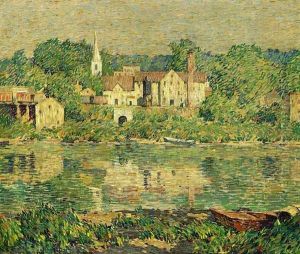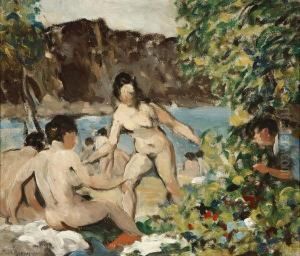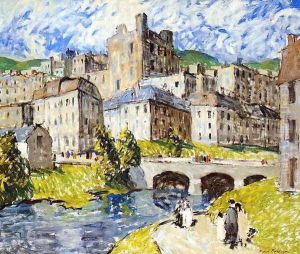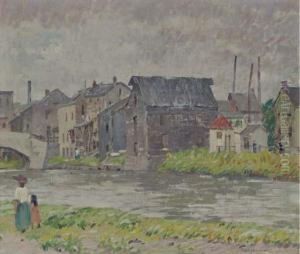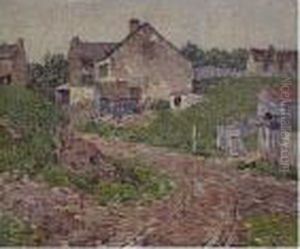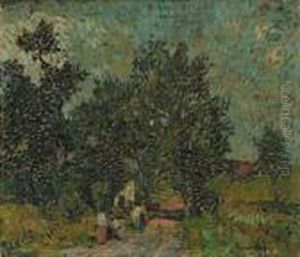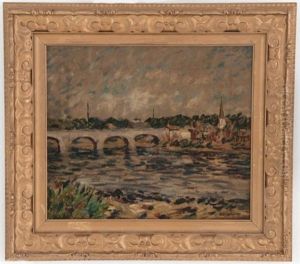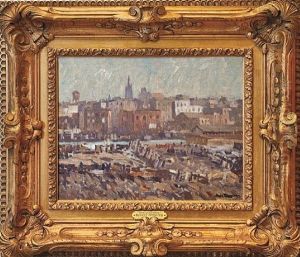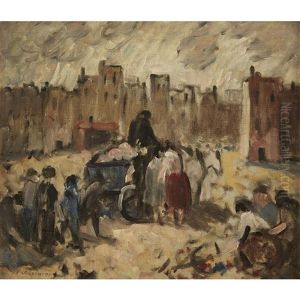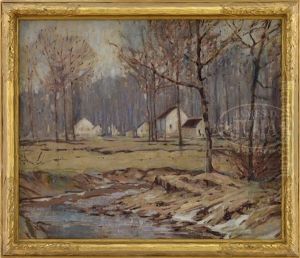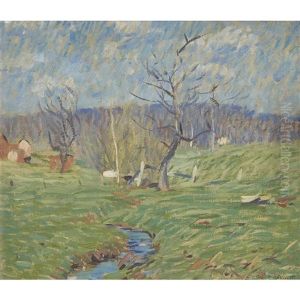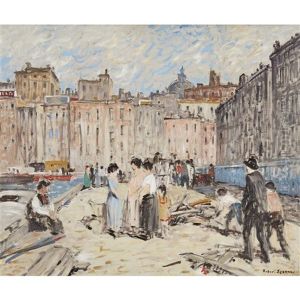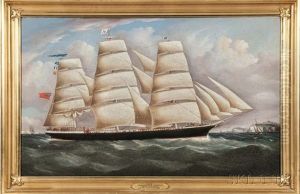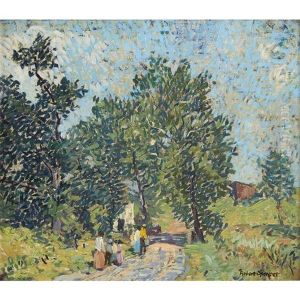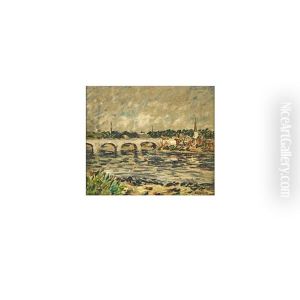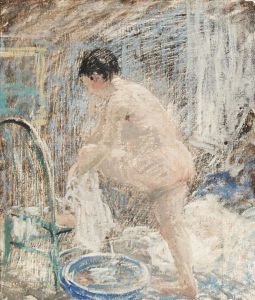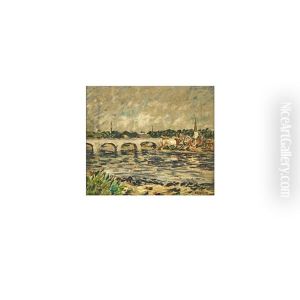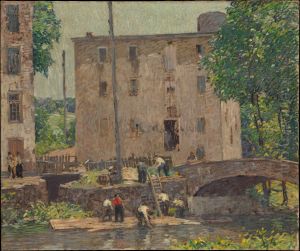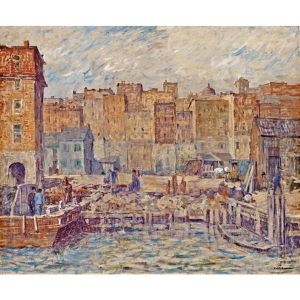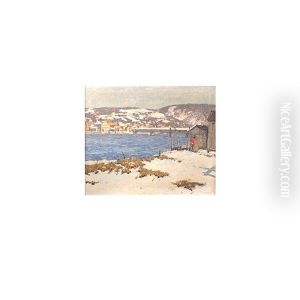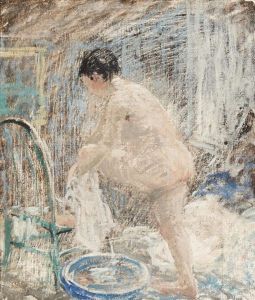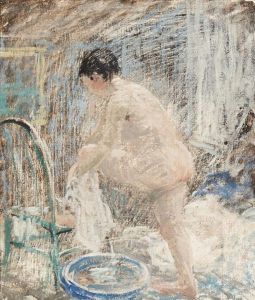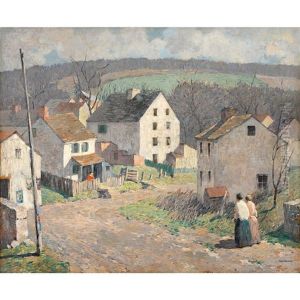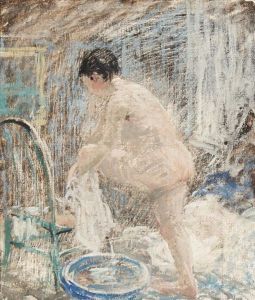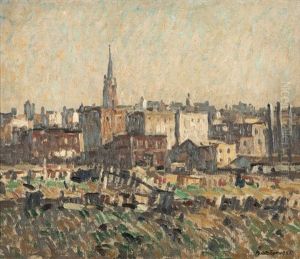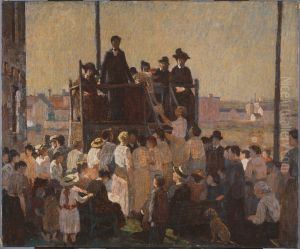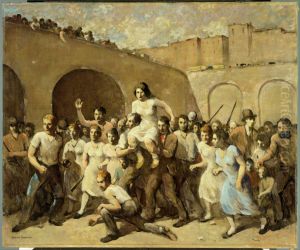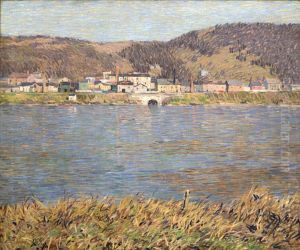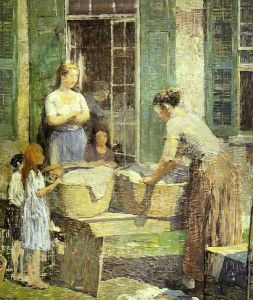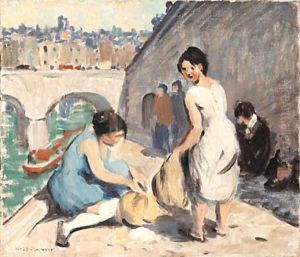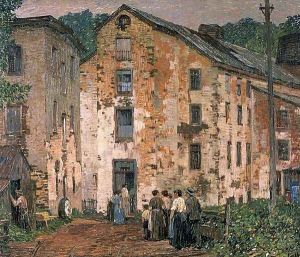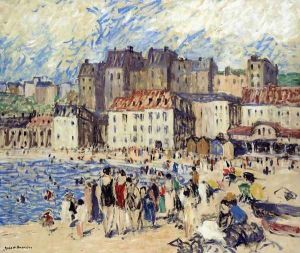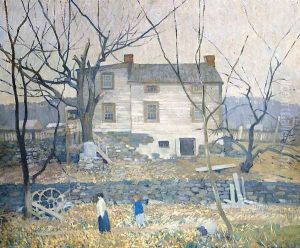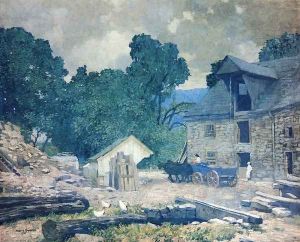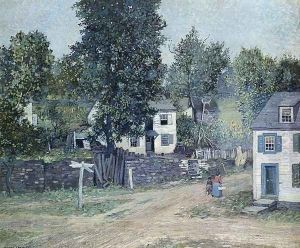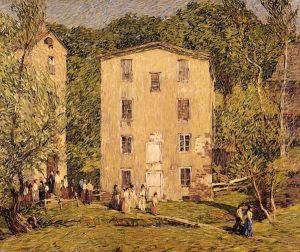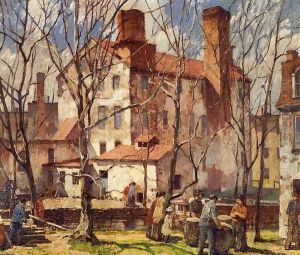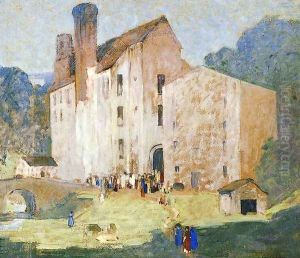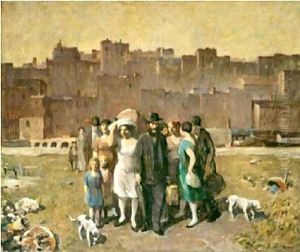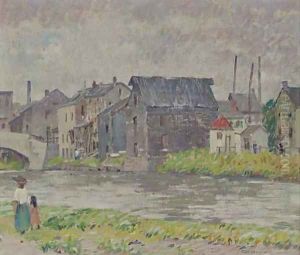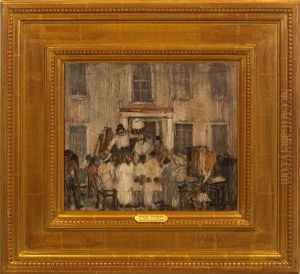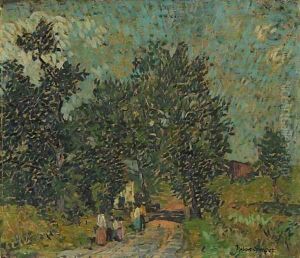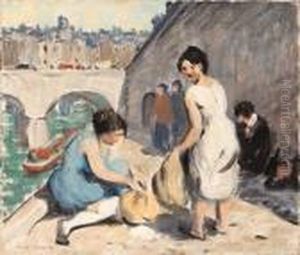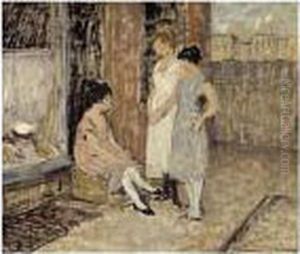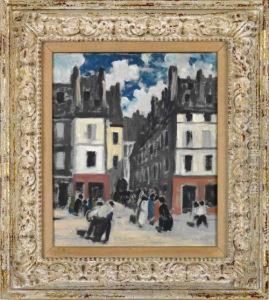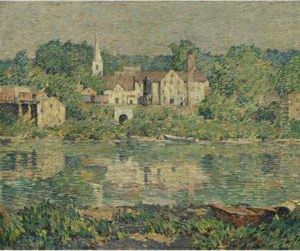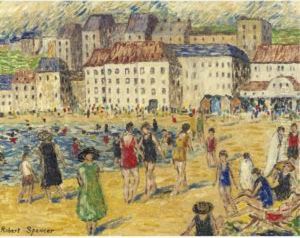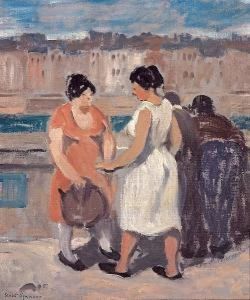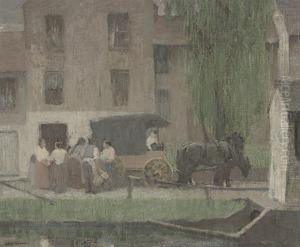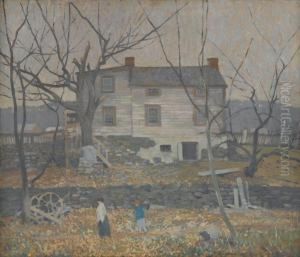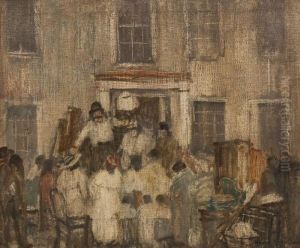Robert Spencer Paintings
Robert Spencer was an American painter known for his impressionistic landscapes and urban scenes. Born on February 1, 1879, in Harvard, Nebraska, Spencer grew up in a family that encouraged his artistic interests. He studied at the National Academy of Design in New York City and later at the Pennsylvania Academy of the Fine Arts, where he was influenced by the work of Edward Redfield and Daniel Garber, prominent figures in the Pennsylvania Impressionist movement.
Spencer developed a distinctive style, often featuring the industrial and rural landscapes of Pennsylvania. His work typically depicted the daily life of small-town America, with a particular focus on the dramatic interplay of light and shadow. He became known for his ability to capture the mood and atmosphere of a scene with a rich and vibrant palette.
In 1909, Spencer settled in New Hope, Pennsylvania, which was a burgeoning center for American Impressionism. Here, he became a member of the art colony and was actively involved in the local arts community. His work during this period reflected the influence of the New Hope School, and he exhibited regularly at galleries and institutions, earning recognition and awards.
Throughout his career, Spencer faced personal challenges, including bouts of depression. Despite these struggles, he continued to produce a significant body of work that was well received by critics and collectors alike. His paintings are now part of many important museum collections, including the Metropolitan Museum of Art in New York and the Pennsylvania Academy of the Fine Arts.
Tragically, Spencer's life came to a premature end when he died by suicide on July 11, 1931, in New Hope. His legacy, however, endures through his contributions to American art, particularly through his evocative portrayals of early 20th-century America.
